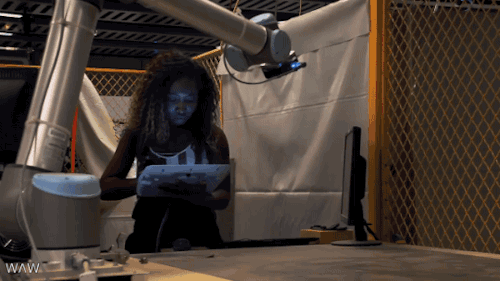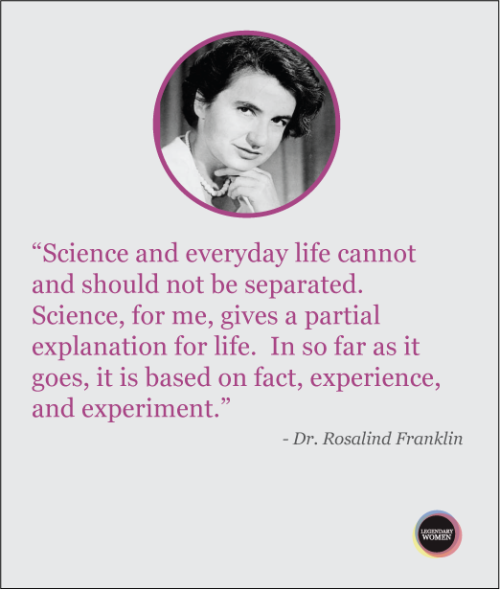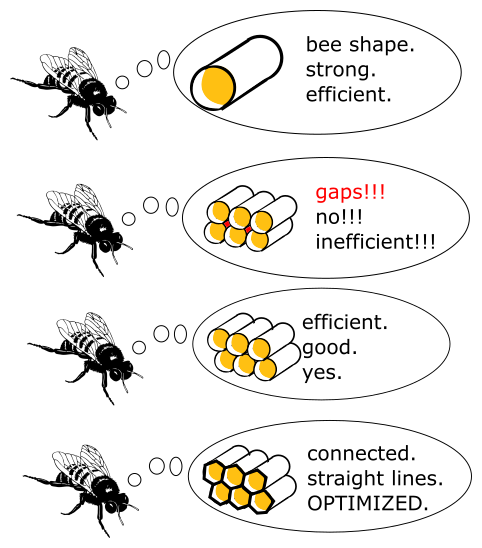Researchers Explore Why Those With Autism Avoid Eye Contact
Researchers explore why those with autism avoid eye contact
Individuals with autism spectrum disorder (ASD) often find it difficult to look others in the eyes. This avoidance has typically been interpreted as a sign of social and personal indifference, but reports from people with autism suggests otherwise. Many say that looking others in the eye is uncomfortable or stressful for them – some will even say that “it burns” – all of which points to a neurological cause. Now, a team of investigators based at the Athinoula A. Martinos Center for Biomedical Imaging at Massachusetts General Hospital has shed light on the brain mechanisms involved in this behavior. They reported their findings in a Nature Scientific Reports paper.
“The findings demonstrate that, contrary to what has been thought, the apparent lack of interpersonal interest among people with autism is not due to a lack of concern,” says Nouchine Hadjikhani, MD, PhD, director of neurolimbic research in the Martinos Center and corresponding author of the new study. “Rather, our results show that this behavior is a way to decrease an unpleasant excessive arousal stemming from overactivation in a particular part of the brain.”
The key to this research lies in the brain’s subcortical system, which is responsible for the natural orientation toward faces seen in newborns and is important later for emotion perception. The subcortical system can be specifically activated by eye contact, and previous work by Hadjikhani and colleagues revealed that, among those with autism, it was oversensitive to effects elicited by direct gaze and emotional expression. In the present study, she took that observation further, asking what happens when those with autism are compelled to look in the eyes of faces conveying different emotions.
Using functional magnetic resonance imaging (fMRI), Hadjikhani and colleagues measured differences in activation within the face-processing components of the subcortical system in people with autism and in control participants as they viewed faces either freely or when constrained to viewing the eye-region. While activation of these structures was similar for both groups exhibited during free viewing, overactivation was observed in participants with autism when concentrating on the eye-region. This was especially true with fearful faces, though similar effects were observed when viewing happy, angry and neutral faces.
The findings of the study support the hypothesis of an imbalance between the brain’s excitatory and inhibitory signaling networks in autism – excitatory refers to neurotransmitters that stimulate the brain, while inhibitory refers to those that calm it and provide equilibrium. Such an imbalance, likely the result of diverse genetic and environmental causes, can strengthen excitatory signaling in the subcortical circuitry involved in face perception. This in turn can result in an abnormal reaction to eye contact, an aversion to direct gaze and consequently abnormal development of the social brain.
In revealing the underlying reasons for eye-avoidance, the study also suggests more effective ways of engaging individuals with autism. “The findings indicate that forcing children with autism to look into someone’s eyes in behavioral therapy may create a lot of anxiety for them,” says Hadjikhani, an associate professor of Radiology at Harvard Medical School. “An approach involving slow habituation to eye contact may help them overcome this overreaction and be able to handle eye contact in the long run, thereby avoiding the cascading effects that this eye-avoidance has on the development of the social brain.”
The researchers are already planning to follow up the research. Hadjikhani is now seeking funding for a study that will use magnetoencephalography (MEG) together with eye-tracking and other behavioral tests to probe more deeply the relationship between the subcortical system and eye contact avoidance in autism.
More Posts from Theperpetualscholar and Others
Tibetan Burial Practice

Image Source: FishOil at English Wikipedia. Body being prepared, Sichuan. Wikipedia.
The “Sky Burial” practice is the most common way to dispose of the dead in Tibet. Tibet is a region with little trees, which in return means fewer cremation practices. Due to temperature, the Tibetan plateau is frozen making burials difficult. With these challenges, the Tibetan people found a solution. Bearded vultures are naturally allowed to eat the decomposing human remains. These birds are considered sacred for Tibetans, and not to be harmed.

Image Source: FishOil at English Wikipedia. File:Vulture - Sky burial.jpg. Wikipedia.
Upon death, he/she gets covered in white cloth. The family keeps the remains in the home and perform prayers. On a lucky day, family members will take the dead to a place of disposition. A monk/specialist will sharpen a knife while saying a prayer. The monk/specialist will cut the flesh, and pulverize the bones to mix with flour for the bearded vultures to consume. Tibetans consider it a sign of good luck when vultures consume the entire body. Tibetans believe that breaking the bones will release the soul. Tibetans also believe that vultures carry these pieces of bone to the sky where the journey heaven begins. No remains left on the ground means the soul arrived safely to heaven. Chants are said over lingering remains as they get cremated.

Image Source: BabelStone. Vultures feeding on the rock used to expose bodies at a sky burial outside Lhasa, Tibet, during the first lunar month, March 1985. Photographs of the sky burial taken with permission of the participants, on condition that no photographs were taken before the vultures were called to eat the bodies of the three deceased persons. Photo scanned from a print. Wikipedia.
Politics. During the 1960s and 1970s, the communist officials outlawed the practice of sky burial. The sky burial practice reinstated in the 1980s.
Another form of Tibetan burial is Tree Burial. This is a burial practice for children. It is usually practiced in Nyingchi, southeast of Tibet. To avoid other children from seeing the corpse, the deceased child is placed in a wooden case. The crate with the body inside is hung on a tree in a remote forest.
Forensic anthropologists must learn of cultural ceremonies associated with death, not only for reference but also as recognition of ethics and values concerning anthropology.

Researchers are trying to understand why ancient Roman concrete is exceptionally durable.
Over two thousand years ago, the ancient Romans built piers, breakwaters, and other structures out of concrete—and some of those structures still stand today. Now, researchers are trying to understand the chemical and geological processes that work together to give that ancient concrete such durability. Using microscopy, x-ray diffraction, and spectroscopic techniques, they’ve developed a map of the crystalline microstructures within the concrete. According to their research, a slow infusion of seawater into concrete made with a type of volcanic ash found near Rome gradually creates crystals of a material called aluminous tobermorite, which actually strengthens the concrete as it ages.
Marie Jackson, a geology and geophysics research professor and one of the authors of a report on the work, says that understanding Roman concrete could give modern materials scientists ideas for how to strengthen modern structures, and could even lead to new materials, such as concretes that soak up and trap nuclear waste.
Photo by THINK Global School/flickr/CC BY-NC-ND 2.0

Figure 1. Bun (Lepus townsendii) approaching ideal bun form (ei. a perfect fluffy orb) over the course of 5.2 hours. Ambient temperature -6°C to -15°C.



MIT Brings Riri Williams to Life in Spring Admissions Video
From the MIT Admissions blog:
Chris asked to meet with me last fall, in late September. We sat down in an office in MIT Admissions. “For the spring admissions video,” he said, “I basically want to make a two-minute trailer for the new Iron Man with Riri Williams.” This sentence, and the conversation that we had afterward, was what would eventually turn into the video you all saw posted on Tuesday… [+]
WΛW | Twitter : Instagram : Facebook : SoundCloud
#WeAreWakanda
![[BEAUTY OF MATHEMATICS]](https://64.media.tumblr.com/f22d4533726ed7f1f4295b6b61b089d2/tumblr_my7fkk9N4V1sfxek2o1_r1_400.gif)
![[BEAUTY OF MATHEMATICS]](https://64.media.tumblr.com/c558ec5fc4688df82727683c663070fa/tumblr_my7fkk9N4V1sfxek2o2_r1_400.gif)
![[BEAUTY OF MATHEMATICS]](https://64.media.tumblr.com/4d0e3ecccba4a91f29dc8efb59550de8/tumblr_my7fkk9N4V1sfxek2o3_400.gif)
![[BEAUTY OF MATHEMATICS]](https://64.media.tumblr.com/da17fb98f0996d8ca4134be50b4a3b7d/tumblr_my7fkk9N4V1sfxek2o4_r1_400.gif)
![[BEAUTY OF MATHEMATICS]](https://64.media.tumblr.com/a83be761e9b3678b55211aface417b54/tumblr_my7fkk9N4V1sfxek2o5_r1_400.gif)
![[BEAUTY OF MATHEMATICS]](https://64.media.tumblr.com/332cf1dc3e8ed56567e97c1e6ca9403d/tumblr_my7fkk9N4V1sfxek2o6_r1_400.gif)
![[BEAUTY OF MATHEMATICS]](https://64.media.tumblr.com/97ce765ab53c1c1fd16d92a49ae405ed/tumblr_my7fkk9N4V1sfxek2o7_r1_400.gif)
![[BEAUTY OF MATHEMATICS]](https://64.media.tumblr.com/8d1074b30ff403edf90fbdf10a550779/tumblr_my7fkk9N4V1sfxek2o8_r1_400.gif)
![[BEAUTY OF MATHEMATICS]](https://64.media.tumblr.com/c8047b77b58c178321c8d38bbe2ab7cf/tumblr_my7fkk9N4V1sfxek2o9_r1_400.gif)
![[BEAUTY OF MATHEMATICS]](https://64.media.tumblr.com/027c467a706212fd86684c6b70d798f1/tumblr_my7fkk9N4V1sfxek2o10_r1_400.gif)
[BEAUTY OF MATHEMATICS]

Christopher Monroe spends his life poking at atoms with light. He arranges them into rings and chains and then massages them with lasers to explore their properties and make basic quantum computers. Last year, he decided to try something seemingly impossible: to create a time crystal.
The name sounds like a prop from Doctor Who, but it has roots in actual physics. Time crystals are hypothetical structures that pulse without requiring any energy — like a ticking clock that never needs winding. The pattern repeats in time in much the same way that the atoms of a crystal repeat in space. The idea was so challenging that when Nobel prizewinning physicist Frank Wilczek proposed the provocative concept1 in 2012, other researchers quickly proved there was no way to create time crystals.
But there was a loophole — and researchers in a separate branch of physics found a way to exploit the gap. Monroe, a physicist at the University of Maryland in College Park, and his team used chains of atoms they had constructed for other purposes to make a version of a time crystal2 (see ‘How to create a time crystal’). “I would say it sort of fell in our laps,” says Monroe.
And a group led by researchers at Harvard University in Cambridge, Massachusetts, independently fashioned time crystals out of 'dirty’ diamonds3. Both versions, which are published this week in Nature, are considered time crystals, but not how Wilczek originally imagined. “It’s less weird than the first idea, but it’s still fricking weird,” says Norman Yao, a physicist at the University of California, Berkeley, and an author on both papers.
Continue Reading.
smithsonianzoo 🐣Our kiwi chick at the Smithsonian Conservation Biology Institute is 2 weeks old! She is eating a mixture of meat, fruit and vegetables. Kiwi chick look like adults when they hatch, but are not fully grown until they are about 18 months old.

Women’s History Month – Dr. Rosalind Franklin, Pioneer Molecular Biologist and Uncredited for Discovering Double Helix Structure of DNA

Why beehives are hexagons.

Crime scene investigators are about to get a helping hand from our ancient ancestors. The earliest known synthetic pigment, Egyptian blue, is found in some of the paint on ancient statues, coffins, tomb walls, and amulets. Most other pigments long ago faded. Modern scientists, intrigued by its longevity, worked out Egyptian blue’s chemical composition decades ago. Recently it was discovered that it emits near-infrared radiation when exposed to certain kinds of light. Basically: it has rare, invisible luminescence.
And why does that help crime-stoppers? Egyptian blue can be dusted onto complicated surfaces where fingerprints are normally hard to retrieve. The surface is then photographed with a modified camera and a filter sensitive to Egyptian blue’s near-infrared rays. If fingerprints are there, they glow clearly in the resulting image. Science is amazing.
-
 cannibalfood liked this · 2 months ago
cannibalfood liked this · 2 months ago -
 lovehappyfestcollectionme-blog liked this · 3 months ago
lovehappyfestcollectionme-blog liked this · 3 months ago -
 atsa-read-later reblogged this · 5 months ago
atsa-read-later reblogged this · 5 months ago -
 scrambld-egg liked this · 8 months ago
scrambld-egg liked this · 8 months ago -
 lopez122417 liked this · 9 months ago
lopez122417 liked this · 9 months ago -
 sweetbutantisocial liked this · 9 months ago
sweetbutantisocial liked this · 9 months ago -
 snoodly-boop reblogged this · 10 months ago
snoodly-boop reblogged this · 10 months ago -
 snoodly-boop liked this · 10 months ago
snoodly-boop liked this · 10 months ago -
 tinywriterfairy liked this · 1 year ago
tinywriterfairy liked this · 1 year ago -
 thaminho liked this · 1 year ago
thaminho liked this · 1 year ago -
 roseredhk reblogged this · 1 year ago
roseredhk reblogged this · 1 year ago -
 roseredhk liked this · 1 year ago
roseredhk liked this · 1 year ago -
 nyaacatboy liked this · 1 year ago
nyaacatboy liked this · 1 year ago -
 icefhkl reblogged this · 1 year ago
icefhkl reblogged this · 1 year ago -
 icefhkl liked this · 1 year ago
icefhkl liked this · 1 year ago -
 vivliotheca reblogged this · 1 year ago
vivliotheca reblogged this · 1 year ago -
 vivliotheca liked this · 1 year ago
vivliotheca liked this · 1 year ago -
 criminalizeheterosexuality reblogged this · 1 year ago
criminalizeheterosexuality reblogged this · 1 year ago -
 criminalizeheterosexuality liked this · 1 year ago
criminalizeheterosexuality liked this · 1 year ago -
 thebluecloudsflyup liked this · 2 years ago
thebluecloudsflyup liked this · 2 years ago -
 trans-mink liked this · 2 years ago
trans-mink liked this · 2 years ago -
 walkin-in-the-cosmos liked this · 2 years ago
walkin-in-the-cosmos liked this · 2 years ago -
 sublyme01 liked this · 2 years ago
sublyme01 liked this · 2 years ago -
 redwolf1999 reblogged this · 2 years ago
redwolf1999 reblogged this · 2 years ago -
 redwolf1999 liked this · 2 years ago
redwolf1999 liked this · 2 years ago -
 sppsdlismartgrl liked this · 2 years ago
sppsdlismartgrl liked this · 2 years ago -
 3raccoonsinalongcoat liked this · 2 years ago
3raccoonsinalongcoat liked this · 2 years ago -
 busywaitingforgodot liked this · 2 years ago
busywaitingforgodot liked this · 2 years ago -
 pessimisticshapewithablog liked this · 2 years ago
pessimisticshapewithablog liked this · 2 years ago -
 demeletron liked this · 2 years ago
demeletron liked this · 2 years ago -
 idiosyncrasies-my-dear-thespian liked this · 3 years ago
idiosyncrasies-my-dear-thespian liked this · 3 years ago -
 tcg00n liked this · 3 years ago
tcg00n liked this · 3 years ago -
 oreos-at-4am liked this · 3 years ago
oreos-at-4am liked this · 3 years ago -
 wekimekicb liked this · 3 years ago
wekimekicb liked this · 3 years ago -
 mydickisfuckingrichard liked this · 3 years ago
mydickisfuckingrichard liked this · 3 years ago -
 music-note120 liked this · 3 years ago
music-note120 liked this · 3 years ago -
 futuredoctorquick reblogged this · 4 years ago
futuredoctorquick reblogged this · 4 years ago -
 pablolepuggo reblogged this · 4 years ago
pablolepuggo reblogged this · 4 years ago -
 pablolepuggo liked this · 4 years ago
pablolepuggo liked this · 4 years ago -
 fuckenwimdy reblogged this · 4 years ago
fuckenwimdy reblogged this · 4 years ago -
 fuckenwimdy liked this · 4 years ago
fuckenwimdy liked this · 4 years ago -
 official-volta liked this · 4 years ago
official-volta liked this · 4 years ago -
 aspirationatwork reblogged this · 4 years ago
aspirationatwork reblogged this · 4 years ago -
 fred-the-dinosaur reblogged this · 4 years ago
fred-the-dinosaur reblogged this · 4 years ago